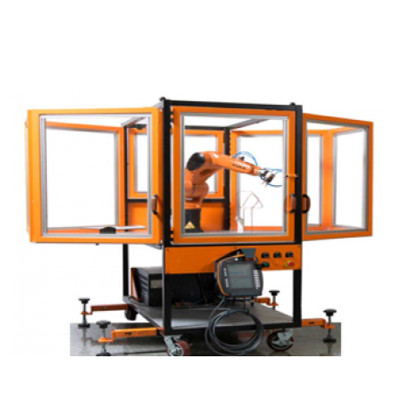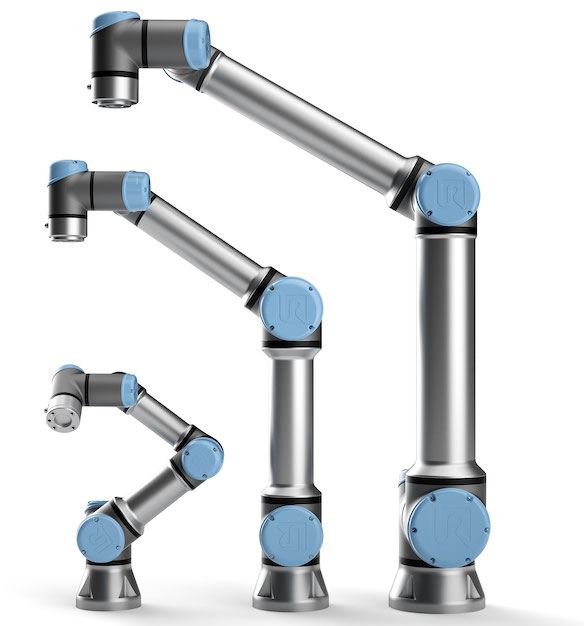More than ever before, robotics research and teaching are critical within university engineering programs. Robotics and control systems are infiltrating every industry. And robotics researchers at universities are contributing to monumental advancements in manufacturing and how patients are treated. If your university is building or renovating a robotics research lab, we have 5 tips for choosing the right equipment and technology for your new robotics research lab.
5 Tips for Outfitting Robotics Research Labs
1. Establish goals for the lab
The first step to selecting the best equipment for your new robotics lab is establishing your goals. Setting goals will help you decide which technology will benefit your lab the most. You will want to consider your immediate needs and long-term goals because the robots you select will impact the layout of your lab.
Here are some questions to start with:
- What is the primary use for the robots—applications, research, or both?
- If they are being used for applications, which kind—industrial, commercial, or medical?
- How will the lab support the university in being innovative and attracting students?
2. Determine your lab space options
The space for your lab will dictate what you can fit in the lab. Some robots require more space than others. And some move, while others are stationary. You'll also need space for students and researchers to work with the robots and collaborate with each other.
Here are some considerations for your lab layout:
- Space for robot platforms on wheels or with aluminum extrusion bases on wheels
- Robots that need guarding (when required for dangerous industrial robots)
- Wiring that may need to run across the floor
- The radial circumference for robots to rotate and move
- Benchtop space for students to collaborate

3. Consider your programming language preferences
Robots work with varying programming languages, so you will need to consider what programming languages you and your students know and if you're willing to learn a new one. Many industrial robots have complex proprietary programming languages in C/C++, Python, and Java, and require more ramp-up time to learn. Collaborative robots generally have a more simplistic approach to programming, allowing students to learn quickly, which can be motivating and a gateway to learning more complex programs.
4. Evaluate robot choices
There are many robot options that are beneficial for research. As you evaluate your options, look at industrial arms, collaborative arms, robot arms, and mobile robots for research. Here are a few robots to consider:
Quanser Q-Arm and Quanser QBot Mobile Robot
Robots that allow your students to access a program development kit are ideal for research. They enable students to change the most fundamental parameters of the robot, such as velocity, acceleration, and more, for a high-level study of kinematics. Quanser's QArm and QBot mobile robot are excellent research platforms that teach students these concepts.

Quanser is a manufacturer that exclusively serves higher ed institutions producing robotics and control systems with comprehensive supporting curricula for teaching and research.
KUKA Industrial Robots
KUKA produces industrial robots that are lightweight, mobile, and precise. Researchers can use KUKA robots to research topics including sensitive robotics, human-robot collaboration, mobility, Industry 4.0, and more.

KUKA is one of the world's leading suppliers of intelligent automation systems for companies in automotive, electronics, metal & plastic, consumer goods, e-commerce/retail, and healthcare.
Universal Robots Collaborative Robots
To research human-robot interaction, collaborative robots (cobots) are ideal. They are safe to use and created to work alongside humans in production capacities. Universal Robots cobots offer researchers flexibility in integrating end effectors and accessories or creating their own with a SDK and open API.

Universal Robots is the leading manufacturer of collaborative robots for production environments around the world. Their robots help companies of all sizes address labor needs and increase productivity.
5. Identify a technical support and training partner
You may need training or technical support on the technology you choose to include in your robotics research lab. AET Labs' application specialists and service technicians are factory-trained to support professors at New England universities, their staff, and their students for the best lab experience possible for the long-term.
Choosing the ideal robot for your research needs is vital. Contact us today if you would like help with your robotics research lab! AET Labs partners with professors at New England higher ed institutions to advise on selecting robots, help design lab layouts, and provide customized training and local technical support.


